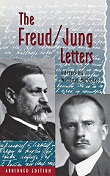Carl Jung Resources > Dream Interpretation
Differences Between the Methods of Dream Interpretation at Jung and Freud There are notable differences between the two methods depending on the specific way in which Jung and Freud approach the unconscious life. Here is a brief list: For Jung,
the dream is interpreted on the subject level (the elements of the dream are components of the dreamer's psyche - archetypes such as the shadow anima, animus, center) - for Freud, on the object level, which involves
placing the dream in a real or imaginary social setting. For Jung, the dream has a prospective character, meaning it points to the future development of dreamer's actual psychical conflict - for Freud, retrospective,
in the sense that it refers to events from the dreamer's past, most often from his/her childhood, that affects the actual life of the dreamer. For Jung, the dream has a compensatory character - for Freud, it is the
hallucinatory realization of a repressed wish. For Freud, analysis leads to the revelation of the contents of the personal unconscious. For Jung, it must offer the solution to the one-sidedness of the dreamer's ego,
leading to better integration/adaptation and a response to the demands/requirements of his/her life. Finally, Jung introduces the amplification method, if necessary, which appeals to materials foreign to the dream
such as myths, symbols, ancestral beliefs, the history of religions. Freud appeals to the free associations of the dreamer, although he also accepts a symbolism that only refers to sexual matters. Interestingly, a
dream can be interpreted using both methods, Freud and Jung. The second being somehow the continuation of the first. The result is amazing. I wrote a special article to illustrate this technique. It is published in
our course Freud and Dreams.
Read also: |
© Copyright AROPA, 2025.
 Freud-Jung letters, a must-read should you need to learn more about their shared ideas and concepts. Buy from Amazon.com
Freud-Jung letters, a must-read should you need to learn more about their shared ideas and concepts. Buy from Amazon.com